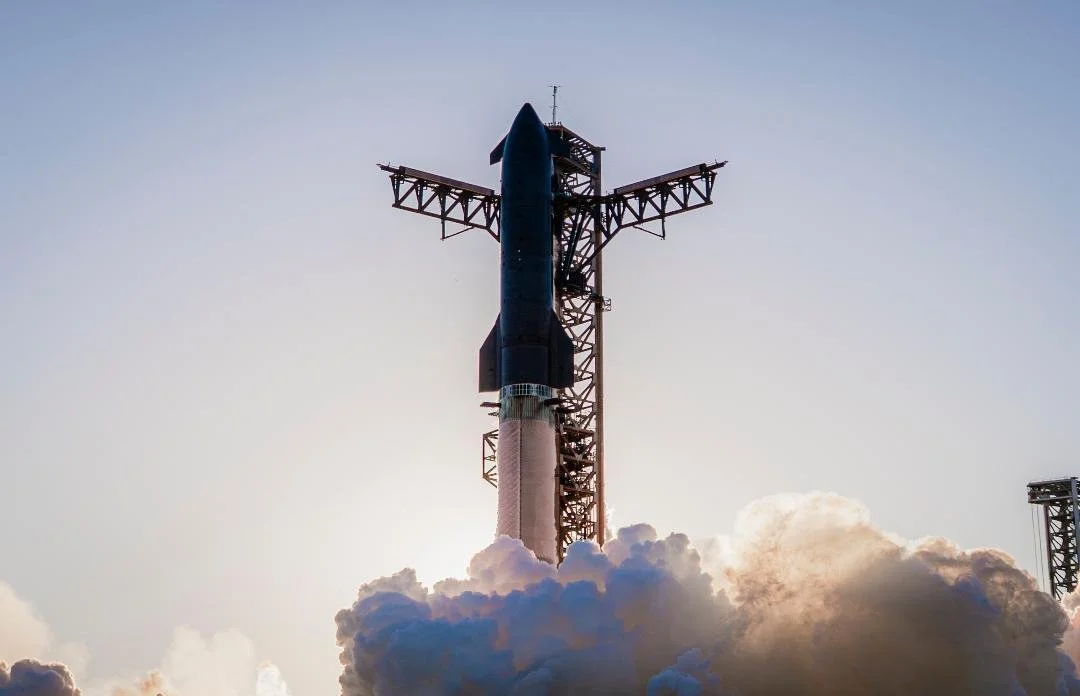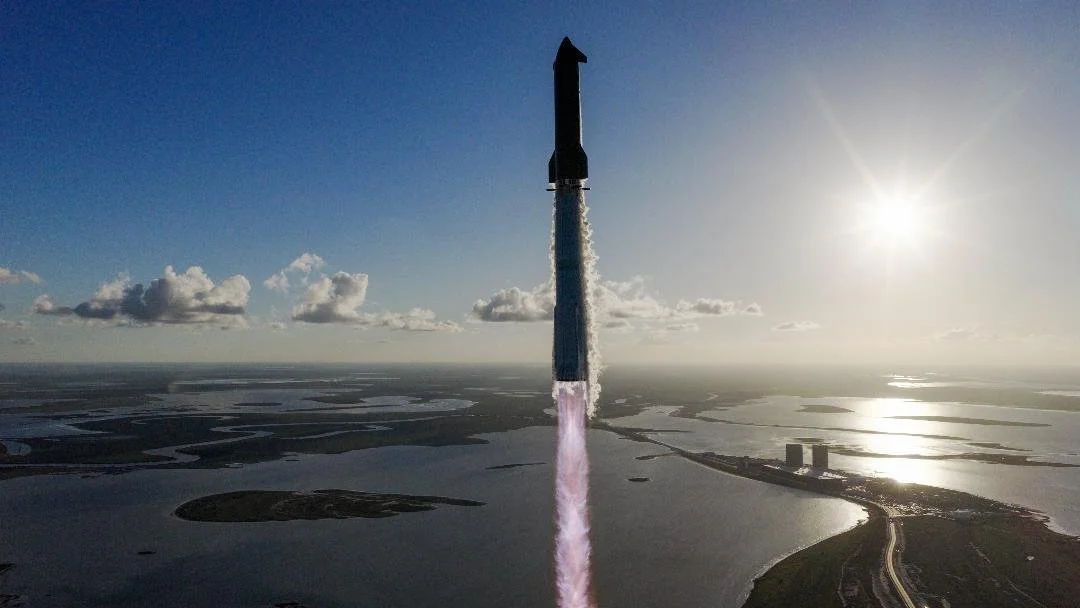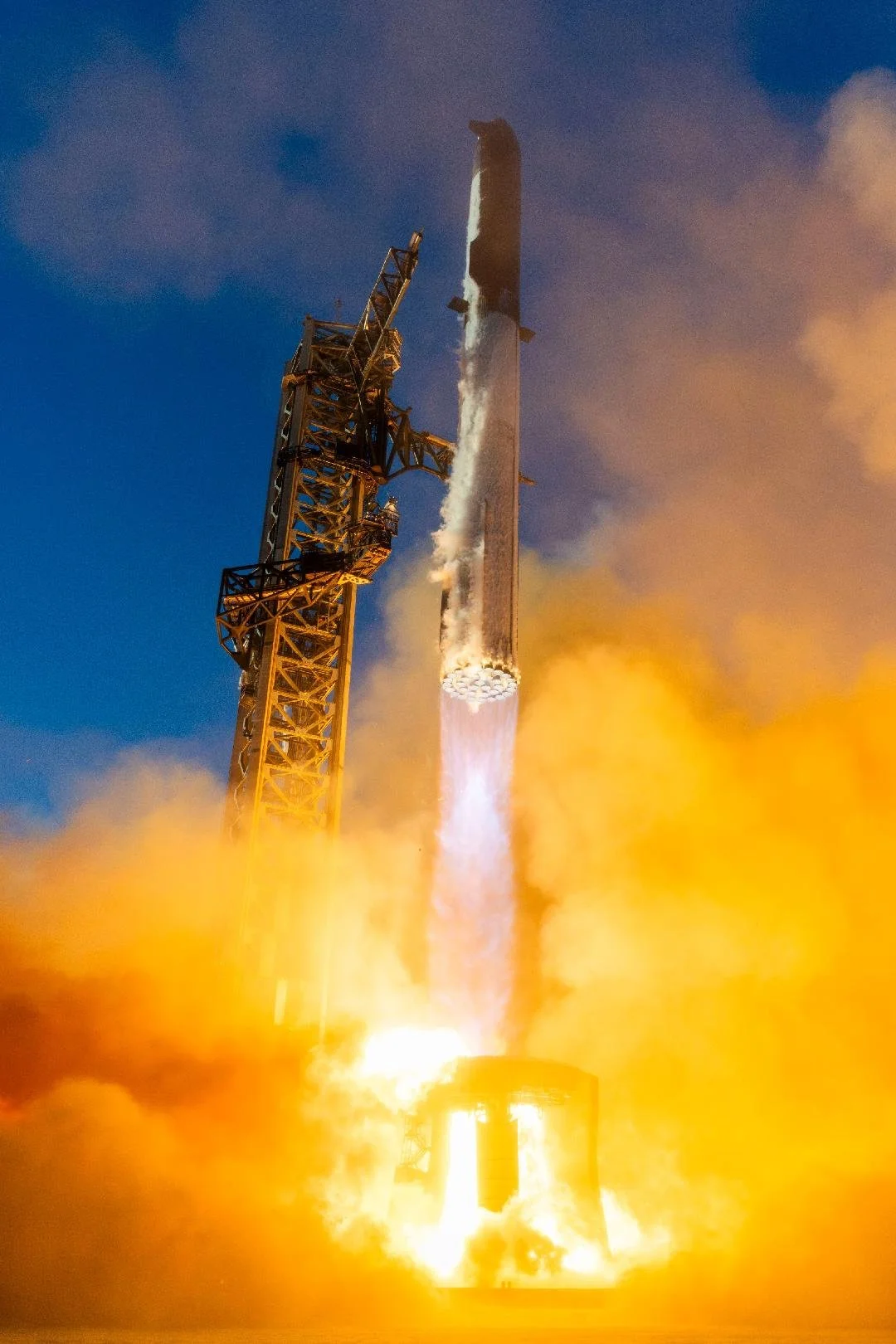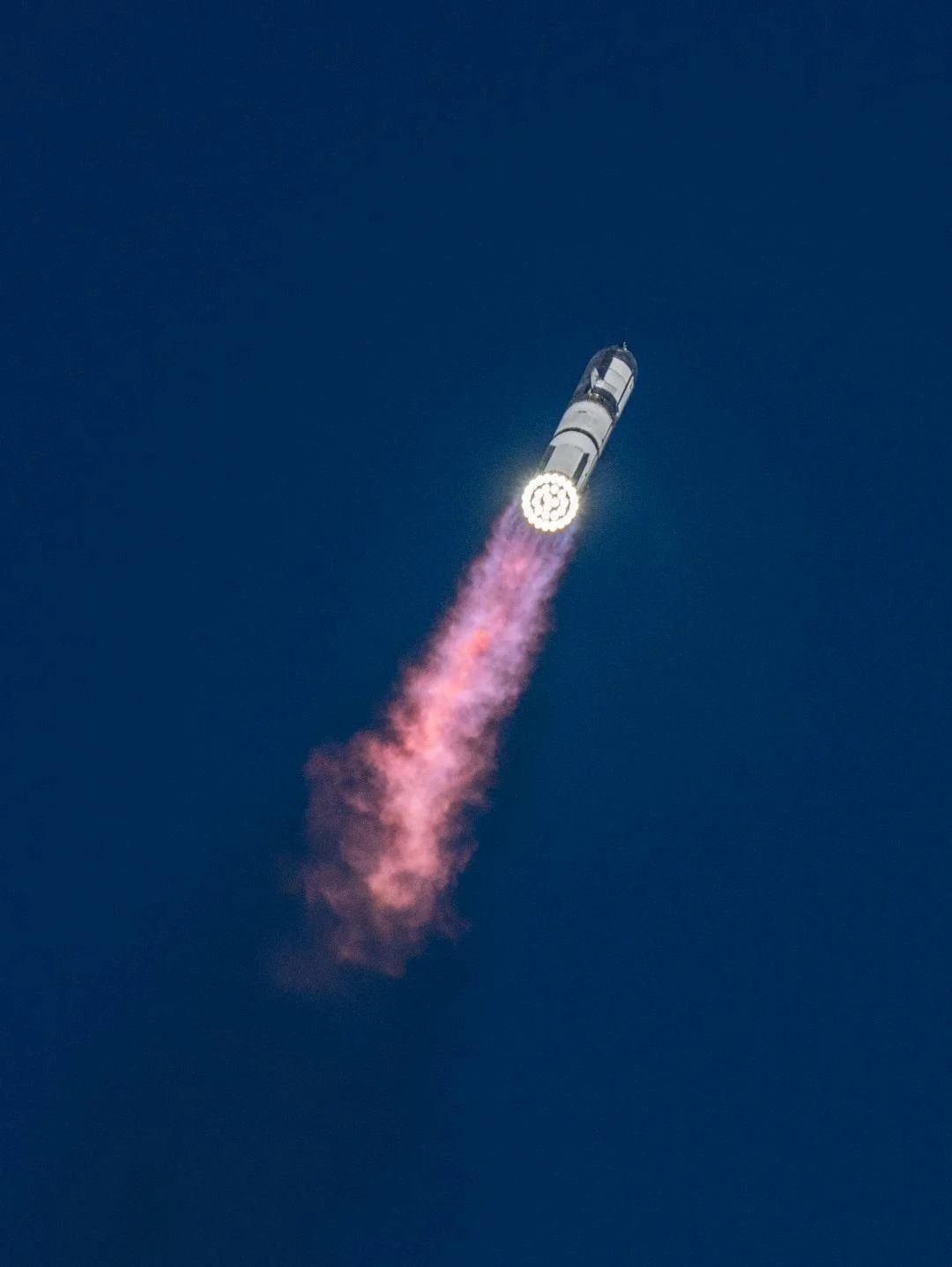Flight 11: end of an era as Starship successfully performs its smoothest test flight to date
Ignition! Credit: SpaceX
Flight 11 launched on Monday 13th October at 6.23pm (local time). This was the final flight of the second-generation Starship and first-generation Super Heavy booster, as well as the final flight from the current configuration of Orbital Launch Mount 1. All of the major objectives were achieved.
A successful ascent. Credit: SpaceX
Lift-off! Credit: SpaceX
This Super Heavy booster had previously flown on Flight 8, and 24 of its Raptor engines were flight-proven. Lift-off saw all 33 Raptors ignite, a successful ascent, a successful hot-staging manoeuvre, and all 6 engines of the upper stage ignite.
After stage separation, the Super Heavy booster successfully came back to a pre-planned splashdown zone off the coast of Texas. It executed a unique landing burn planned for use on the next generation booster, then hovered above the water before shutting down its engines and splashing down.
During its flight, Starship successfully deployed eight Starlink simulators for the second successive time, this time perfectly and with the addition of an exterior camera view. It then executed the third in-space relight of a Raptor engine, demonstrating a critical capability for future deorbit burns.
Starship re-entered the Earth’s atmosphere and was able to gather extensive data on the performance of its heatshield which was intentionally stressed to test the limits of the vehicle’s capabilities. In the final minutes of flight, Starship performed a dynamic banking manoeuvre to mimic the trajectory that future missions returning to Starbase will fly. Finally, Starship guided itself to the pre-planned splashdown zone in the Indian Ocean, successfully executing a landing flip, landing burn, and soft splashdown.
The power of 33 Raptors. Credit: SpaceX
Attention now turns to the next generation of Starship and Super Heavy which will attempt the first orbital flights, operational payload missions, and propellant transfer. The construction of Orbital Launch Mount 2 is progressing well, nearing completion, but still requiring a few more months of additional work. It’s complex stuff.
The second-generation of the upper stage ship promised significant improvements, but Flights 7 and 8 were disappointing - apart from the spectacular second and third catches of the booster. Flight 9 was a bit better, but still disappointing. Flights 10 and 11 then successfully delivered. Data is always the payload during these test flights, and SpaceX are learning a lot.
Written by Iain Scott, 14th October 2025



